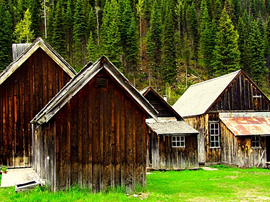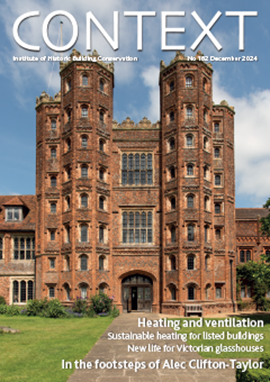Union Chain Bridge
Renovating a structure that is listed both Category A in Scotland and Grade I in England depended on effective cross-border cooperation in planning, funding and construction.

|
| Union Chain Bridge - The restored bridge seen from the Scottish side. |
Contents |
Introduction
The Union Chain Bridge, the world’s oldest vehicular suspension bridge, crosses both the River Tweed and the national border between Scotland and England, which runs up the centre of the river. Lying about five miles upstream of Berwick-upon-Tweed, it was designed by Captain Sir Samuel Brown, who had originally made chains for the Royal Navy and later developed the use of iron chain links for suspension bridges.[1]
With a span of 137 metres between pylons, the bridge was opened in 1820 after less than a year of construction work, at a cost of £7,700, for the Berwick and Durham Turnpike Trust. It was completed fully six years before Thomas Telford’s Menai and Conwy suspension bridges, which were both opened in 1826. The Scottish pylon is the oldest free-standing road suspension bridge pylon in the world. The corresponding support on the English side is formed as a masonry facade built against the cliff face, originally incorporating a toll house.
It operated as a toll bridge until 1883, when responsibility for it was vested with the Tweed Bridges Trust. In more recent years it has been maintained by a partnership between Northumberland County Council and Scottish Borders Council. It forms part of the Tweed Cycleway and provides a convenient crossing point for local light traffic. The bridge is listed Category A in Scotland and Grade I in England.
Repair and maintenance work has included timber bridge deck renewals on at least five occasions since it was originally completed, most recently in 1993. Supplementary suspension cables were added in 1903 (and subsequently removed as part of the current project). There has been a weight limit of 2 tonnes since 1950 and there is a width limit reinforced by solid (and much paint-scarred) stone bollards. Some of the link units had been replaced over the years, and all the hangers had been replaced in 1870 – and again some more recently. A bridge inspection, which resulted in a conservation management plan in 2010, noted a number of failures of suspension hangers and deterioration of the protective paint finishes. The need for an overall strategy of major repairs and interventions was clearly indicated.
In 2017 a conservation management plan supplement was commissioned from Spencer and Dower, architects and historic building consultants, who undertook further research into the structure’s history. At this stage it was agreed to seek funding from the National Lottery Heritage Fund towards the costs of the works, enabling the bridge to reopen in time for the 2020 bicentennial of the original opening. Work started in earnest to develop detailed proposals for a comprehensive package of repairs so that the bridge can continue in use for at least the next 50 years, with only minor routine maintenance. A detailed principal bridge inspection was carried out in 2018 to identify all the necessary works in detail.
Crossing borders
Two other bridges cross the national boundary between the Scottish Borders and Northumberland: the masonry bridges at Coldstream, designed by John Smeaton in 1766, and the Norham/Ladykirk bridge. Routine maintenance and minor repairs to both these bridges is routinely carried out without the need for formal consents.
In the case of the proposed works at the Union Chain Bridge, listed building consent was required as both alterations and straightforward repairs were proposed. The work required included the following significant alterations:
- strengthening and augmentation of the existing chain anchorages
- removal of the two wire ropes, their hangers and anchorages
- replacement of the wrought iron hangers and repairs to the cast iron hanger caps
- repairs to the railings and handrail
- addition of new railings at mid-span
- repainting system and colours, following historic paint analysis.
Other work consisted of:
- replacement of the bottom chord steel angle supports
- replacement of deck, support timbers and deck boards
- alteration of widths of the carriageway, kerbs and walkway
- replacement of the English deck-flap
- stonework repairs to the pylons, abutments, anchorage piers and embankment masonry
- repairs to the chains, links and pins.
Two separate listed building consent applications were required, as the structure is effectively half Scottish and half English. Extensive pre-application discussion took place between the two planning services and Historic Environment Scotland and Historic England about the detailed proposals and the necessary supporting information. The two applications were handled completely separately but with similar timescales. Before the applications were formally submitted, a suite of planning conditions was agreed so that when consent was finally approved, the discharge of conditions could be managed by both authorities and work could proceed with the minimum of delay. Overall, the consent process was managed proactively from start to finish with effective cross-border cooperation.
In parallel with the formal consents being sought, a major exercise was undertaken to develop a funding package for all the works, which had an ultimate price tag of around £7.5 million. The principal funders were the National Lottery Heritage Fund, Scottish Borders Council, Northumberland County Council, Historic Environment Scotland, Historic England, Friends of the Union Chain Bridge, Sustrans and a range of other contributors. While some funds could be used on all of the bridge without restriction, other grants, in particular those from Historic Environment Scotland and Historic England, could be used only for the parts of the structure in their respective nations. Historic Environment Scotland funded the works to the Scottish pylon and Historic England to the English abutment.
Technical aspects
Northumberland County Council acted as the lead consultant for the design and implementation of the works. The main contractor was Hull-based Spencer Bridge Engineering, whose experience of bridge works includes working on the Menai suspension bridge. The challenge of undertaking work over the Tweed without using extensive scaffolding or temporary structures in the water was met by using an overhead cable crane (effectively a second suspension bridge) being installed at a higher level. This provided a mobile gantry with electric winches to enable the works to take place safely.
The complete bridge structure was dismantled and taken to a local facility, where each section of the ironwork was tagged and its condition examined. The majority of the suspension links were reuseable, although new hangers were installed throughout as the bridge was reassembled on site. Two new statues were commissioned from artist Sebastien Boyesen: one of Captain Samuel Brown, the other of a modern female civil engineer in hard hat and boots.
Associated learning
A Union Bridge community outreach programme, ‘Crossing borders, inspiring communities’, was led by Museums Northumberland from 2020–23, funded by the National Lottery Heritage Fund. The aims of the project were to celebrate the extraordinary engineering, landscape and context with communities on both sides of the border and to provide local schools with STEM (science, technology, engineering and maths) learning opportunities. More than 3,000 pupils at 18 primary schools and three secondary schools, and 800 members of the public, took part in STEM activities and workshops. Local volunteers (including the author of this article) were recruited for community archaeology and oral history projects.
Reopening
After the project was delayed by the pandemic, the refurbished bridge was finally reopened in April 2023. A family celebration day was held on 26 July 2023, exactly 203 years after the bridge was originally opened, with a ceremony held in the middle of the bridge on the national boundary, and a piper from each country leading the way. The weight limit has been raised from 2 to 3 tonnes, although the width restriction remains.
The project received the Georgian Group’s Architectural Award in 2023.
References
- [1] Samuel Brown also designed a smaller vehicular suspension bridge in the Scottish Borders over the Teviot Water at Kalemouth near Kelso, completed in about 1830. Category A listed, it has been closed to vehicles since 2020 following an inspection and its future is uncertain.
This article originally appeared as ‘Union Chain Bridge: crossing the border’ in the Institute of Historic Building Conservation’s (IHBC’s) Context 179, published in March 2024. It was written by Mark Douglas, now retired, who was team leader (heritage and design) in the planning service of Scottish Borders Council, and a volunteer community archaeology member of the Union Chain Bridge Project.
--Institute of Historic Building Conservation
Related articles on Designing Buildings Conservation.
- Bridge.
- Conservation.
- Cumbria's vernacular architecture and Hadrian's Wall
- Hadrian's Wall from end to end.
- Hadrian's Wall Path and the national trails.
- Heliocaminus.
- Heritage.
- Historic environment.
- IHBC articles.
- Institute of Historic Building Conservation.
- Library of Celsus.
- National trails.
- Pantheon.
- Regeneration in Carlisle.
- What happened to Hadrian's Wall.
IHBC NewsBlog
200th Anniversary Celebration of the Modern Railway Planned
The Stockton & Darlington Railway opened on September 27, 1825.
Competence Framework Launched for Sustainability in the Built Environment
The Construction Industry Council (CIC) and the Edge have jointly published the framework.
Historic England Launches Wellbeing Strategy for Heritage
Whether through visiting, volunteering, learning or creative practice, engaging with heritage can strengthen confidence, resilience, hope and social connections.
National Trust for Canada’s Review of 2024
Great Saves & Worst Losses Highlighted
IHBC's SelfStarter Website Undergoes Refresh
New updates and resources for emerging conservation professionals.
‘Behind the Scenes’ podcast on St. Pauls Cathedral Published
Experience the inside track on one of the world’s best known places of worship and visitor attractions.
National Audit Office (NAO) says Government building maintenance backlog is at least £49 billion
The public spending watchdog will need to consider the best way to manage its assets to bring property condition to a satisfactory level.
IHBC Publishes C182 focused on Heating and Ventilation
The latest issue of Context explores sustainable heating for listed buildings and more.
Notre-Dame Cathedral of Paris reopening: 7-8 December
The reopening is in time for Christmas 2025.
Stirling Prize-winning Salford building to be demolished
The Centenary Building will be bulldozed as part of the wider £2.5bn Crescent regeneration project.
















